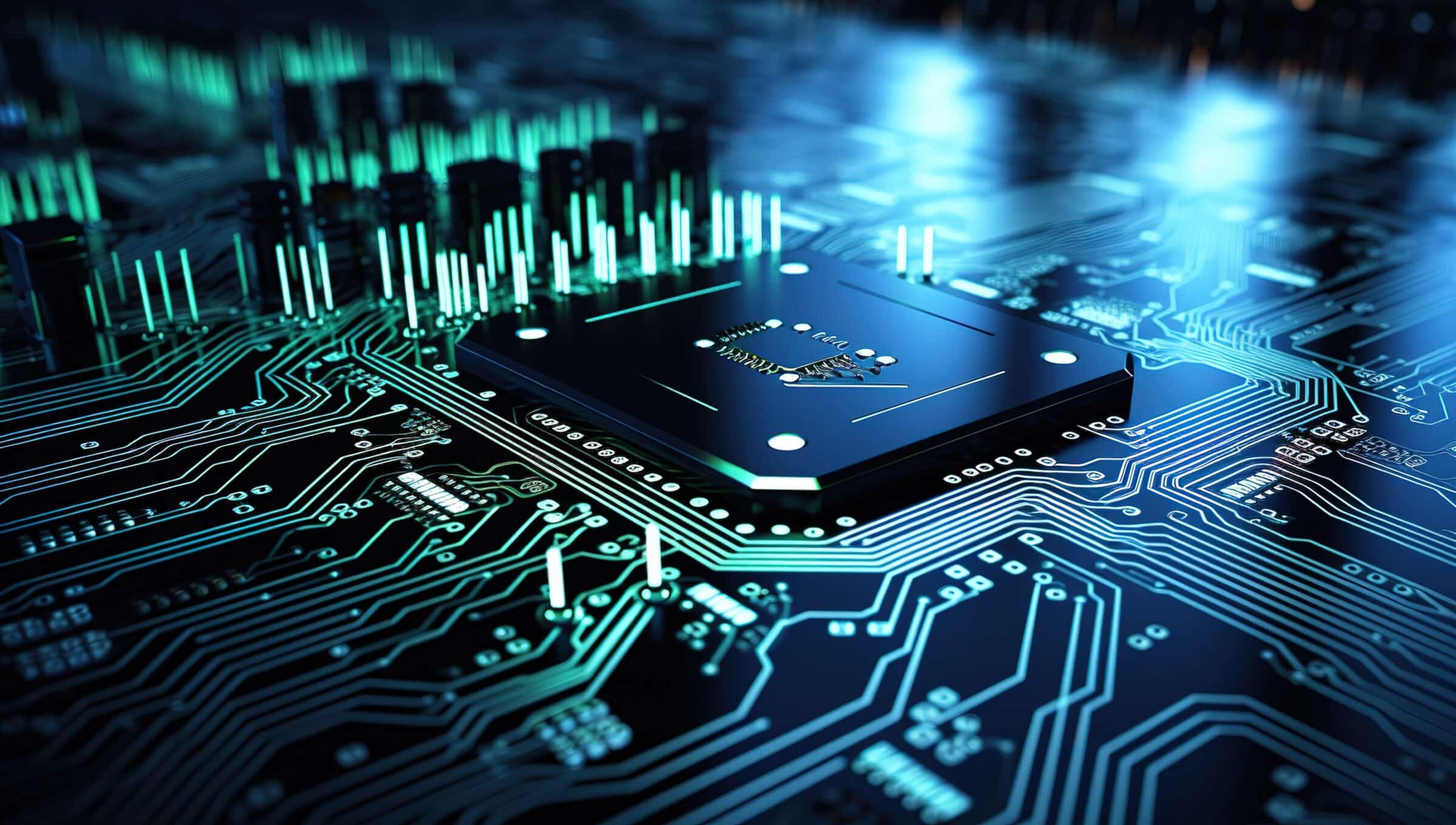You may have heard the phrase ‘The Internet of Things (IoT)’ being used within various sectors and use cases in recent years.
It is a technology that is transforming the way we live and work, opening the door to endless possibilities within key industries such as healthcare, manufacturing, and transportation.
But what exactly is IoT? And how does IoT work?
In simple terms, IoT refers to the connection of everyday devices and objects to the internet, allowing them to send and receive data. These devices range from sensors, access systems to household appliances, cars, and medical equipment.
Applying IoT technology to your business operations, however, is not a one-size-fits-all solution.
There are several types of IoT connectivity options available, and it is important to know which one is best suited for your specific needs.
In this guide, we will provide you with a detailed overview of IoT connectivity, the diverse types of IoT technology, and how to choose the right one for your business.
What is IoT Connectivity?
The Internet of Things (IoT) represents a vast network of interconnected digital devices and sensors, enabling them to securely communicate and share data with host systems, cloud services and apps via the internet.
This extensive network includes everything from everyday household items like smart thermostats and security cameras to more complex systems, such as autonomous vehicles and smart city technologies.
At its core, IoT connectivity is the means that enables IoT devices to communicate autonomously, securely and resiliently, providing the necessary infrastructure for data to be exchanged seamlessly inside and across devices data eco-systems.
It uses various communication protocols, technologies, and standards to ensure that devices can connect and interact with management platforms and cloud services, contributing to more efficient operations, enhanced safety, and improved quality of life.
For beginners, understanding IoT connectivity is key to unlocking the potential of this innovative technology landscape.
Where is IoT Commonly Used?
The Internet of Things is everywhere.
From smart homes and wearables to healthcare, transportation, manufacturing, and agriculture, IoT technology enables devices to connect and interact, providing real-time data and insights that can be used for decision-making and automation.
With sectors becoming increasingly digital, organisations are implementing tailored IoT solutions to streamline their operations, increase efficiency and enhance user experience.
What is more, smart cities around the world are implementing IoT connectivity to improve their citizens’ quality of life. Through the use of sensors and connected devices, cities such as Dubai and Singapore can monitor and manage everything from traffic flow and energy usage to waste management and public transportation.
The key industries that make use of IoT connectivity include:
- Automotive
- Industrial
- Smart cities
- Transport and logistics
- Healthcare
- Agriculture
- Environmental monitoring
- Construction
- Utilities
- Retail and hospitality
- Lone worker protection
Key Technologies for Internet of Things Connectivity
IoT connectivity is not limited to one singular technology or protocol. It encompasses a wide range of technologies that enable seamless communication between devices, networks, and applications.
The kind of technology your IoT SIM card will use for your operation will depend on a variety of factors which will be explored in more detail in the following section.
Here is a brief overview of their key use cases and benefits of the most used technologies for IoT:
2G, 3G, 4G / 4G LTE, and 5G
These cellular technologies are vital for wide-area network (WAN) connectivity. They are widely used in applications where devices need to send data over long distances or on the move, like in automotive and transport logistics. The progression from 2G to 5G has significantly increased data transfer speeds and reliability, enabling more complex and data-intensive applications as earlier technologies begin to sunset.
NB-IoT and LTE-M:
Both NB-IoT and LTE-M are subsets of 4G and 5G technology designed for IoT. They are particularly useful for applications requiring low power consumption and extended coverage in hard-to-reach areas. This makes them ideal for agricultural, environmental monitoring, and smart metering IoT applications.
LPWANs (Low Power Wide Area Networks):
LPWANs, such as LoRaWAN and Sigfox, offer long-range communication at a low bit rate, which is good for IoT applications that don’t require high data speeds but need long battery life and low cost, such as in some smart city and agricultural use cases. They are also useful where no mobile signal is available.
Short-Range Wireless Technologies:
Bluetooth, ZigBee, and WiFi are commonly used for local area network (LAN) connectivity in IoT. They offer faster data transfer rates than LPWANs but are limited in range. Their low power consumption and simplicity make it them proficient for smart home devices and in the case of Bluetooth, wearable applications.
Satellite:
Satellite connectivity provides global coverage, making it ideal for IoT applications in remote or maritime environments, where other connectivity options are not available. Use cases include global asset tracking and environmental monitoring.
Each technology offers unique benefits, making it suitable for specific IoT applications. By selecting the appropriate connectivity option, organisations can ensure efficient, reliable communication between their devices, leading to enhanced operations, cost savings, and improved user experiences.
The Key to Reliable IoT Connectivity
The three most essential elements of any IoT operation are coverage, bandwidth, and power consumption.
These three aspects are integral to the success of any IoT deployment and must be carefully considered when selecting the right connectivity option.
Coverage
Coverage refers to the geographical area where IoT devices can successfully connect to a network and communicate with each other, as well as with central systems over the internet.
It is a critical factor because, without sufficient coverage, IoT devices cannot transmit or receive data, rendering them inoperative.
By ensuring a consistent and reliable connection, businesses can experience an uninterrupted flow of data that allows their operation to continually function with maximum uptime.
For businesses and services relying on IoT, inadequate coverage could mean disrupted operations, loss of data, and a failure to achieve intended outcomes or provide value to end-users.
Bandwidth
Bandwidth relates to the amount of data that can be transmitted between devices over a network in a specific period.
In low data applications, it is often measured in bits per second (bps) and determines how much information IoT devices can send and receive, impacting the speed and efficiency of data transfer. This aspect is crucial for IoT operations because different applications require varying data rates.
Selecting the right bandwidth is essential for optimising performance, ensuring smooth and timely data flow, and maintaining the reliability and effectiveness of IoT systems.
Power Consumption
Considering that many IoT devices are compact and deployed in remote, inaccessible areas, they often rely on battery power for extended periods. This presents a unique challenge for IoT devices, as their power consumption must be carefully managed to ensure longevity and operational efficiency.
Therefore, minimising power consumption is essential to extend the battery life of these devices, reducing maintenance needs and ensuring continuous data collection and transmission.
The importance of power consumption lies in its direct impact on the reliability, sustainability, and cost-effectiveness of IoT operations.
Efficient power management enables IoT devices to remain operational for longer periods, making the network more reliable and reducing the frequency of battery replacements or charges.
Additional Challenges to Consider in an IoT Operation
Along with coverage, bandwidth and power consumption, there are a variety of additional factors that must be carefully considered when selecting your IoT technology.
Each factor presents a new challenge that must be addressed to ensure a seamless and reliable IoT operation.
The importance of each challenge will depend on the IoT operation in question, the budgetary requirements of the project, and the specific needs of the organisation. Some of these key challenges include:
Cost
The most obvious challenge of any IoT operation is, of course, the cost.
The cost of IoT encompasses not just the initial expenditure on devices and infrastructure, but also ongoing expenses related to maintenance, network usage, and data processing.
For organisations, especially startups or those with limited budgets, these costs can be a significant factor in determining the viability and scale of an IoT project.
Effective cost management is crucial, as it allows for the optimisation of resources without compromising the functionality or efficiency of the IoT system.
Mobility
Mobility is pivotal in IoT operations as it dictates how seamlessly devices can communicate while on the move.
For many IoT applications, such as wearable technology or vehicle tracking systems, the ability to transmit and receive data irrespective of location is crucial.
Ensuring seamless connectivity for mobile devices enhances the flexibility and application range of IoT solutions, making it an essential factor to consider when planning and deploying IoT operations.
Scalability
Scalability determines the system’s ability to adapt to varying demands.
Whether it is accommodating more devices, managing increased data volumes, or expanding geographical coverage, scalability ensures that an IoT system can grow and evolve with the needs of the organisation.
For businesses planning for future growth or those in rapidly changing industries, selecting scalable technologies and solutions is key to sustaining long-term success and avoiding the limitations imposed by less flexible systems.
Data Throughput
Data throughput, is the rate at which data is successfully transmitted from one point to another within a network.
In the context of Internet of Things operations, it is a crucial factor to consider because it directly impacts the performance and capability of IoT devices and the IoT system.
Higher throughput allows for faster transmission of larger volumes of data, which is essential for applications requiring real-time analytics or the streaming of video files.
Conversely, lower throughput can lead to delays and reduced efficiency, affecting the overall effectiveness of IoT applications.
For a seamless and responsive IoT operation, ensuring adequate data throughput is essential.
Positioning
Positioning is a critical factor for many IoT operations as it determines the physical location of IoT devices. This is especially important in applications like asset tracking, autonomous vehicles, and smart cities, amongst others.
Knowing the exact location of devices allows for more accurate data collection, efficient asset management, and enhanced operational decision-making.
Precise positioning enables IoT systems to deliver tailored, location-based services and insights, making it an indispensable consideration in the planning and deployment of IoT solutions.
Latency
Latency, refers to the delay before a transfer of data begins following an instruction for its transfer which in IoT will involve two way communications. In the context of IoT operations, it is a critical factor because it dictates the responsiveness of the system.
High latency can result in slow communications between devices and servers, affecting the efficiency and reliability of real-time applications such as autonomous driving systems or remote medical monitoring.
Reducing latency is essential to ensure that IoT devices can act and react in a timely manner, making the overall IoT system more effective and reliable for users.
Indoor Penetration
Indoor penetration is a critical aspect to consider for IoT operations as it pertains to the ability of wireless signals to pass through walls and other obstacles within buildings.
This factor is particularly important in environments where IoT devices are deployed indoors, such as smart homes, offices, or warehouses.
Good indoor penetration ensures that devices can communicate effectively with each other and with the network, regardless of physical barriers.
This is essential for maintaining reliable connectivity and ensuring that the IoT system functions smoothly, providing accurate and timely data collection and analysis.
While IoT routers, IoT gateways, ZigBee and Bluetooth systems can provide local in-building connectivity when used with directional or external antennae, excessive interference or clashing is an important consideration.
Security
Considering that IoT systems typically process and store elevated levels of sensitive information, reliable security and privacy of data is paramount.
Given the interconnected nature of IoT devices, a vulnerability in one device can potentially compromise the entire network, leading to data breaches or malicious control.
Therefore, ensuring robust security measures are in place not only protects the data integrity but also the privacy and safety of users.
Choosing the Right IoT Technology For Your Application
The above factors are all crucial components to consider when choosing the right IoT technology for your operation.
As mentioned earlier, each technology comes with a range of benefits and limitations that must be considered in relation to your specific needs.
It is vital to thoroughly assess each factor and determine which is most critical for your application before deciding on the appropriate technology.
For example, Wi-Fi and cellular are both relatively common connectivity technologies for consumer IoT devices, especially with them both being integrated into most modern smartphones.
However, depending on the specific needs and limitations of your IoT application, you may need to consider other options, such as LPWANs for long-range connectivity or satellites for remote areas with no cellular coverage.
Wi-Fi can be a complex option for IoT connectivity in large-scale deployments due to its limited range and potential interference from other devices.
What is more, for each IoT operation there are technical, commercial and ecosystem factors to consider when selecting the right technology.
Before committing to an IoT technology, it is always best to consult with an expert within the IoT field, such as Caburn Telecom, to ensure the best and most cost-effective decision is made.
Caburn Telecom is a leading provider of IoT connectivity solutions, offering a range of technologies and services to meet the diverse needs of businesses and organisations across various industries.
Our team of experts can provide valuable insights and guidance in selecting the right technology for your specific application, as well as providing ongoing support and management services to ensure optimal performance and reliability of your IoT system.
To unlock the immersive potential of the Internet of Things for your business, contact the Caburn Telecom team today. Let us help you navigate the complex IoT landscape and find the perfect technology solution for your specific needs.
So, do not hesitate to reach out to us for any assistance in choosing the right IoT technology for your operations.
Start your journey towards a connected future with Caburn Telecom today.




